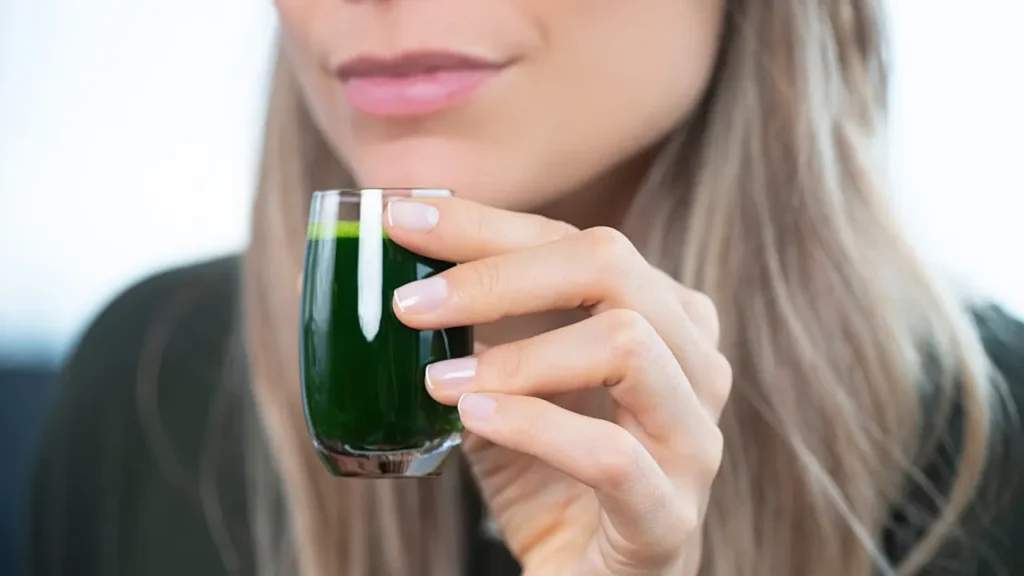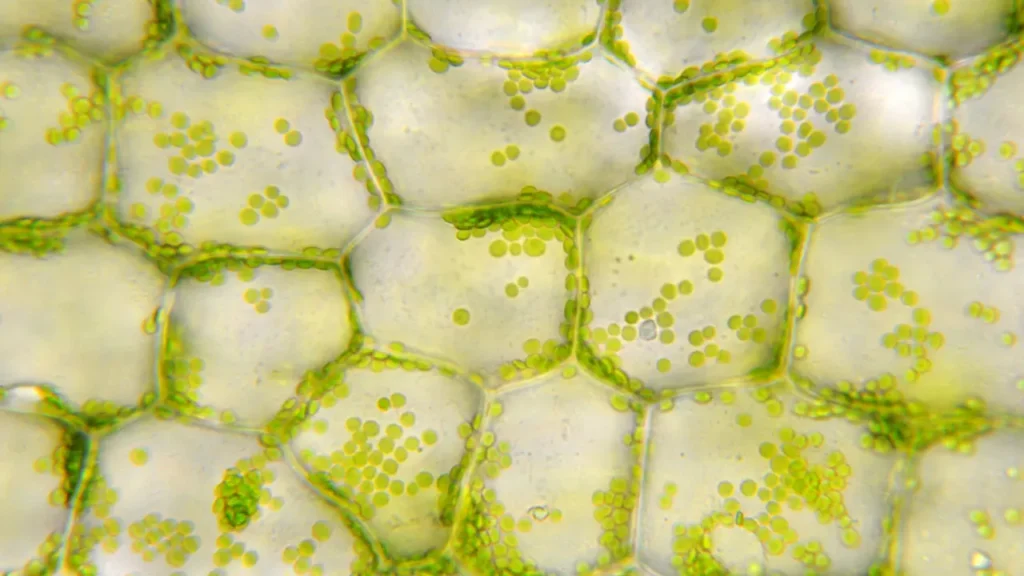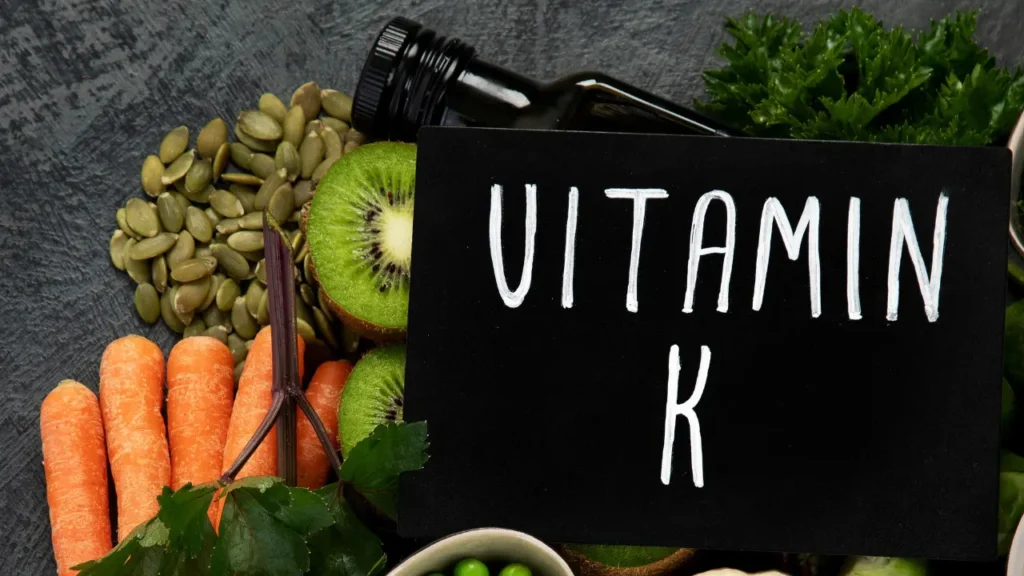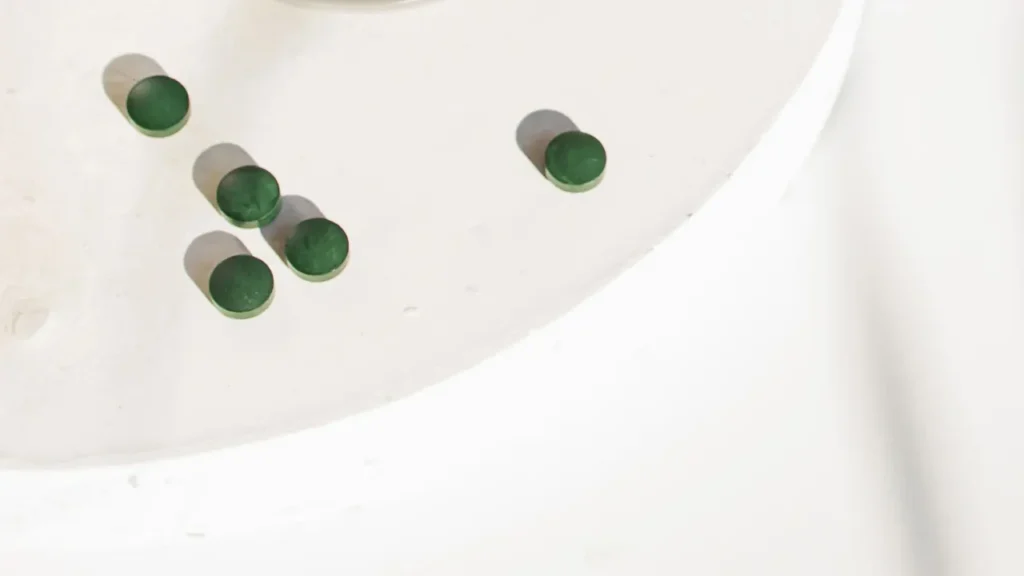Wheatgrass (triticum aestivum) is a type of grass of the common wheat plant that has gained popularity as a nutritional supplement due to its high concentration of critical elements and alleged health advantages. This article will go through and highlight the chemical makeup, health advantages, ideal dosage, side effects, probable substance interactions, and best responsible applications of wheatgrass.
You May Also Like:
Should You Try CBD for Focus? Here Are the Facts.
Diamond CBD Gummies vs. Joy Organics CBD Gummies
Wheatgrass: Benefits, Dosage, Side Effects, Drug Interactions, And Other Important Information is an original (NootropicsPlanet) article.
The Nature of Wheatgrass
The poaceae family includes the young grass known as wheatgrass (triticum aestivum), which is a descendant of the ordinary wheat plant. The grass is often harvested when it is still young, usually 7 to 14 days after germination and when it is between 6 and 12 inches tall. Wheatgrass is grown primarily for its medicinal and nutritional benefits and is distinguished by its vivid green hue. It can be taken as fresh juice, powder, tablets, or capsules, among other forms.
The nutritional makeup of wheatgrass can be considerably impacted by the growing environment, soil quality, and harvesting period. The total quality and nutritional value of wheatgrass can be improved with the use of the best production procedures, such as organic farming methods and the use of nutrient-rich soil. When the plant’s nutrient content is at its height, during jointing, the young grass is routinely picked to provide optimal health advantages for eating.
Health Benefits of Wheatgrass
Numerous health advantages, such as antioxidant and anti-inflammatory properties, immune system support, blood sugar management, and detoxification, have been linked to the use of wheatgrass.
Effects of Antioxidants and Anti-inflammation
Antioxidants, which are abundant in wheatgrass, help combat free radicals and lessen oxidative stress. Research has demonstrated that wheatgrass can protect our erythrocytes, liver cells, and brain cells from oxidative damage. Additionally, animal testing has shown that wheatgrass has anti-inflammatory properties, lowering the production of pro-inflammatory cytokines and attenuating inflammatory responses.
Immune System Assistance
The high concentration of vitamins, minerals, and phytochemicals in wheatgrass is thought to be the cause of its immunomodulatory properties. By assisting in the formation of immune cells, encouraging the activity of natural killer cells, and controlling cytokine synthesis, these nutrients can improve the immune system’s performance.
Blood Sugar Control
Both animal and human research has revealed the hypoglycemic effects of wheatgrass. The presence of phenolic chemicals may inhibit alpha-amylase and alpha-glucosidase, two enzymes in charge of breaking down carbohydrates into glucose; this may be the cause of these effects.
Detoxification
Because wheatgrass contains a lot of chlorophyll, it is believed to have detoxifying effects. It has been demonstrated that chlorophyll protects against a variety of poisons, including heavy metals and environmental contaminants. Additionally, it can help the liver function and speed up the body’s ability to get rid of dangerous chemicals.

Chemistry of Wheatgrass
Vitamins, minerals, amino acids, and antioxidants are abundant in wheatgrass and are essential for preserving general health. Chlorophyll, flavonoids, phenolic compounds, and different enzymes are the main components of wheatgrass. The recognized benefits of wheatgrass on health are a result of these elements.
Chlorophyll
The green pigment chlorophyll is essential for photosynthesis. Chlorophyll content in wheatgrass ranges from 0.7 to 1.2% (dry weight basis). Researchers are looking at chlorophyll’s possible health benefits, including its blood-building and detoxifying abilities, because its chemical structure is quite similar to that of heme in hemoglobin.
The Phenolic and Flavonoid Compounds
Numerous flavonoids and phenolic substances, recognized for their anti-inflammatory, anticancer, and antioxidant effects, are found in wheatgrass. The primary flavonoids in wheatgrass include apigenin, luteolin, and quercetin, while the phenolic constituents include ferulic, syringic, and vanillic acids.
Enzymes
In living things, enzymes work as biological catalysts to speed up chemical reactions. Several enzymes, including catalase, peroxidase, and superoxide dismutase (SOD), are present in wheatgrass. These enzymes are well-known for their antioxidant potential and the ability to guard against oxidative cell damage.
Physiological Properties of Wheatgrass
The physiological properties underlying wheatgrass’s health advantages are mostly ascribed to the bio-active chemicals found in it. The elements that follow will cover the physiological properties linked with wheatgrass ingestion.
Antioxidant and Anti-Inflammatory Properties
Wheatgrass is high in antioxidants such as flavonoids, phenolic compounds, and enzymes including superoxide dismutase (SOD) and catalase. These antioxidants protect cells from oxidative damage by neutralizing free radicals and reactive oxygen species (ROS), both of which can cause cellular damage and inflammation, as well as contribute to the development of chronic illnesses. Furthermore, flavonoids and phenolic compounds can influence the activity of enzymes involved in the generation of inflammatory mediators known as prostaglandins and leukotrienes, such as cyclooxygenase and lipoxygenase.
Improvement of the Immune System
Wheatgrass minerals and phytochemicals can help the immune system operate in a variety of ways. For example, a high vitamin and mineral content, such as vitamin C and zinc, can boost the formation and activity of immune cells, such as T-cells and natural killer cells. Wheatgrass has also been demonstrated to control cytokine production, altering the balance of pro-inflammatory and anti-inflammatory cytokines and, as a result, regulating immunological responses.
Blood Sugar Control
Wheatgrass’s phenolic chemicals, such as ferulic acid, have been shown to block the carbohydrate-digesting enzymes like alpha-amylase and alpha-glucosidase. This inhibition delays carbohydrate breakdown into glucose, resulting in a more gradual rise in blood sugar levels after a meal. As a result, this process helps regulate blood sugar levels and can help people who have diabetes or are at risk of getting it.
Detoxification
Wheatgrass’ detoxifying abilities are primarily due to its high chlorophyll concentration. Toxic chemicals, such as heavy metals and environmental contaminants, can bind to chlorophyll, producing stable complexes that are then removed from the body. Furthermore, chlorophyll enhances the excretion of bile and stimulates the synthesis of detoxifying enzymes, which aids in the elimination of waste products and toxins from the body.


Optimal Dosage of Wheatgrass
Individual responses to wheatgrass may vary depending on characteristics such as your age, body weight, and your overall health status, therefore there is no documented standard protocol on the appropriate amount. However, a general recommendation is to begin with 1-2 grams of wheatgrass powder or 30-60 milliliters of fresh wheatgrass juice per day. To avoid potential negative side effects, gradually increasing the dosage to a maximum of 4 grams of powder or 120 milliliters of juice daily is recommended.
Side Effects of Wheatgrass
Wheatgrass is generally regarded as safe for most people when ingested in moderation. However, some people may encounter side effects such as:
Discomfort in the Gastrointestinal Tract
Wheatgrass consumption can induce moderate gastrointestinal symptoms such as bloating, gas, and diarrhea. These are often temporary symptoms that can be mitigated by gradually raising the dosage.
Reactions to Allergens
Wheatgrass can cause allergy reactions if you are allergic to wheat or grass. Skin rash, itching, and trouble breathing are all possible symptoms. Wheatgrass ingestion should be halted in such circumstances, and medical attention should be sought if symptoms persist or worsen.
Contamination Threats
If grown in unsanitary conditions or dirty soil, wheatgrass may be contaminated with bacteria, mold, or heavy metals. To reduce the possibility of contamination, only buy wheatgrass from recognized providers.
Potential Substance Interactions with Wheatgrass
While wheatgrass is generally regarded as safe, certain drugs or substances can interact with it. Among these interactions are:
Anticoagulants
Wheatgrass is abundant in vitamin K, which is essential for blood clotting. Large doses of wheatgrass can reduce the effectiveness of anticoagulant drugs like warfarin. Before ingesting wheatgrass, anyone on anticoagulant therapy should see their healthcare physician.
Medications for Lowering Blood Sugar
Wheatgrass can interact with blood sugar-lowering drugs such as insulin or oral hypoglycemic treatments due to its hypoglycemic effects. This combination can result in abnormally low blood sugar levels (hypoglycemia). Individuals using these medications should regularly check their blood sugar levels and consult their doctor before incorporating wheatgrass into their diet.


Best Responsible Uses of Wheatgrass
The following rules should be followed to optimize the possible health benefits of wheatgrass while minimizing the possibility of negative effects or interactions:
Begin with a Low Dosage
To avoid gastrointestinal discomfort, start with a low dose of wheatgrass (1-2 grams of powder or 30-60 milliliters of juice daily) and gradually increase as tolerated.
Selecting High-Quality Wheatgrass
Choose wheatgrass from trusted sources to avoid impurities such as bacteria, mold, or heavy metals.
Consult a Medical Professional
Before introducing wheatgrass into your diet,if you have any pre-existing medical conditions or are using drugs, you should consult with your healthcare provider.
Wheatgrass:
Conclusion
Wheatgrass can be very beneficial to our overall health, especially when it comes to controlling blood sugar. If you are diabetic, wheatgrass supplementation may be right for you, however, there is still research being done on it so it is important to talk to your doctor first before trying it. It is important to make sure it is safe enough for your specific needs.


References:
- Health benefits of wheatgrass and nutritional composition. Retrieved from: https://www.healthline.com/nutrition/wheatgrass-benefits
- The antioxidant and anti-inflammatory properties of wheatgrass. Retrieved from: https://www.medicalnewstoday.com/articles/320210
- Immunomodulatory effects of wheatgrass on immune cells and cytokine production. Retrieved from: https://www.ncbi.nlm.nih.gov/pmc/articles/PMC5734515
- Hypoglycemic effects of wheatgrass and its impact on carbohydrate-digesting enzymes. Retrieved from: https://www.sciencedirect.com/science/article/abs/pii/S1756464617300343
- Detoxifying properties of chlorophyll and its role in liver function. Retrieved from: https://www.webmd.com/diet/health-benefits-chlorophyll#1
Important Note: The information contained in this article is for general informational purposes only, and should not be construed as health or medical advice, nor is it intended to diagnose, prevent, treat, or cure any disease or health condition. Before embarking on any diet, fitness regimen, or program of nutritional supplementation, it is advisable to consult your healthcare professional in order to determine its safety and probable efficacy in terms of your individual state of health.
Regarding Nutritional Supplements Or Other Non-Prescription Health Products: If any nutritional supplements or other non-prescription health products are mentioned in the foregoing article, any claims or statements made about them have not been evaluated by the U.S. Food and Drug Administration, and such nutritional supplements or other health products are not intended to diagnose, treat, cure, or prevent any disease.
